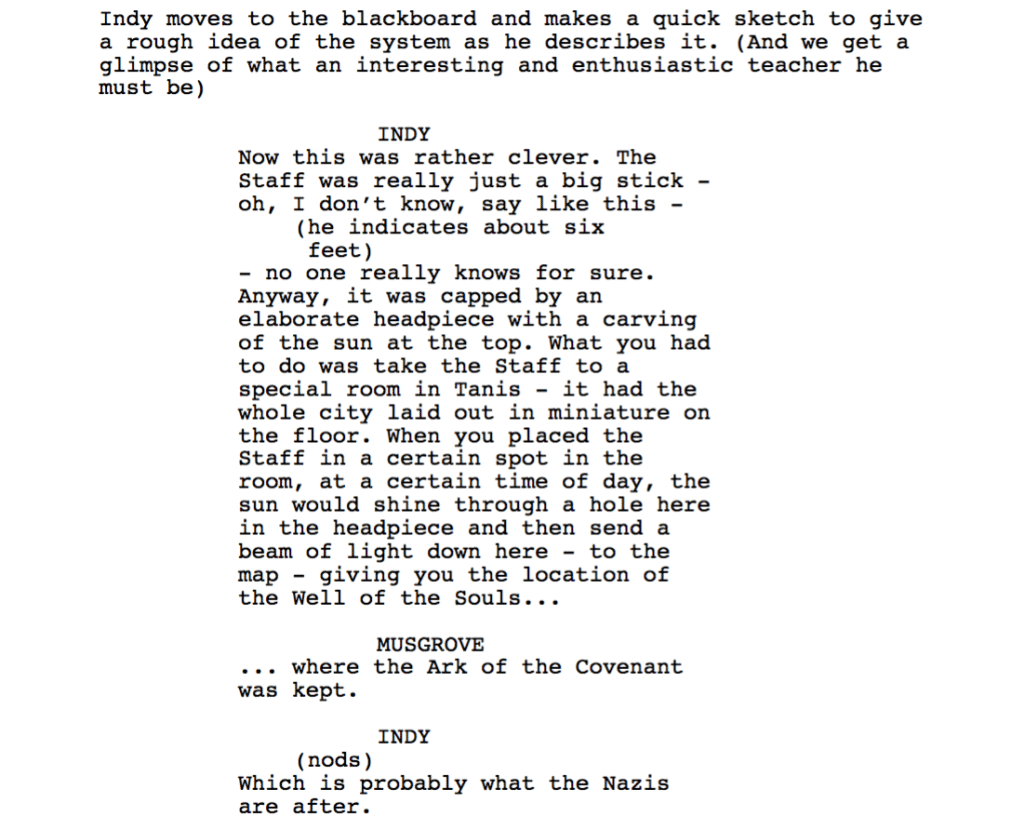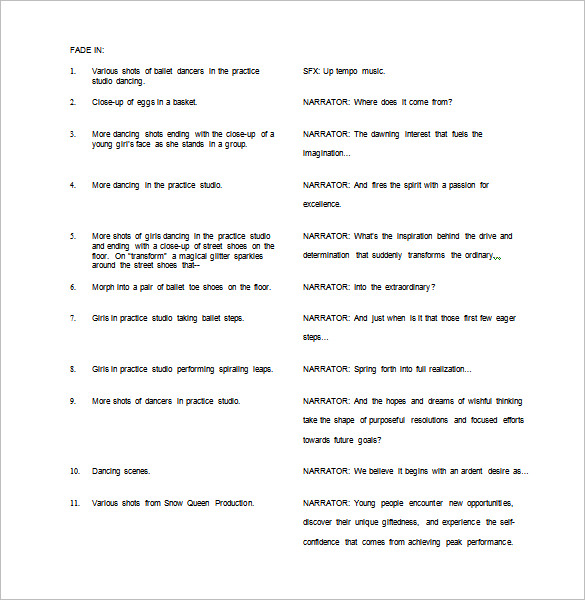Free Examples Of Movie Scripts
How to Write a Script and Beyond: FREE Screenwriting Tips, Advice, & Downloads. In this free guide you'll find examples from five movies of cool character. The Movie Script Page! See below for what is new on the site or click on a letter under 'Movie Scripts'. Scripts are listed by the first noun in the title.
The actual writing of your script is the fun part. But, just like any form of writing, you have to know where you’re going first. Organization is important. That’s where a script outline comes into play.
Understanding your central character’s desire, and capturing the scenarios they attract for themselves, should guide that process. There is no straightforward way to know how to outline a screenplay.

But these tried-and-true guidelines will help you crack the structure for your character’s journey. Thankfully, you don’t have to re-invent the wheel every time you need to lay down your structure. In fact, plot structure is as old as Aristotle. Simply put, act structure means having a beginning, middle, and end. In Film and TV terms, this referred to as. One very popular resource for dramatic structure is Blake Snyder’s Save the Cat.
Free Examples Of Movie Scripts Free
Its very simple formula breaks your plot into eight distinct “beats.” Each beat has suggested page counts for when they need to happen. But you don’t have to be strict about it. A beat sheet will help you nail the major plot turns that round out your character’s arc. You can then flesh these out in your script outline.
Remember, plot is character. They’re two sides of the same coin! Your script outline, often referred to as a “step outline,” is where you extend your high-level beats into individual scenes. Your beat sheet is high-level. So the number of scenes required to realize those beats are entirely up to you. There are to give you a rough estimate of how many scenes you need per act.
But again, it’s about what your character’s arc requires - there are no rules. You can include acts, scene numbers, and scene headings to organize your script outline. And try to connect the dots with as few scenes as possible. Be economical, and don’t bore the audience with too much exposition. Revisions will help with that. Make sure there’s an inciting incident in act one, and plenty of conflict in each beat.
How detailed you want to get is entirely up to you. But it’s fair game to include detailed descriptions, characterizations, and even dialogue if you so choose. I like to get pretty detailed.
That way, when I sit down to write, I’m only worried about writing the scene in a compelling way. However, I have also experience getting to a scene I thought I carefully outlined, only to realize that it didn’t work. Point is, you can’t plan everything in a film outline. At some point you just need to get started.
After all, writing is rewriting. Script outlines can be boring to read. Make sure your scenes have a direct cause-and-effect relationship with one another. Years ago, South Park creators Trey Parker and Matt Stone on how they mastered this technique. Once you have all of your scenes together in your script outline, think about how you would explain them to someone. You should never need the words “and then” in between any of your scenes. That would disrupt the flow of cause-and-effect crucial to any plot.Consider this beat from Raiders of the Lost Ark: “Indiana Jones discovers the Ark of the Covenant in the Well of Souls.”.
If your dream is to write a screenplay so a talented director can translate it to the big screen, you have to learn the language of film. A movie script looks - and acts - nothing like a novel. It's a document full of white space, compressed description and action, and heavy on dialogue that reveals character and advances the plot. The story arises from a hook, a one line attention-grabbing concept so intriguing that you can build an entire movie script around it. 1, 2, 3.Roll Camera Most screenwriters and filmmakers use a simple 3-act story arc. Their movies have a 1-2-3 punch of a set-up, confrontation and resolution, according to a formula explained by screenwriting gurus Robert McKee and Syd Field.
Roughly divide your two-hour story into four sections and three acts. Act one, about 30 minutes long, contains the inciting incident that starts the action barreling along to its inevitable conclusion. Near the end of act one, the hero or main character chooses to engage with the problem or challenge at the moment of a reversal that sends the plot off in a new direction. In act two - about 60 minutes of the film - the action builds towards a mid-point and then spirals to another reversal, the second main plot point. This hijacks the action and pitches it toward the climax - act three, all of the remaining movie.
Timing is Everything The inciting incident that sends the story off on its real journey happens near the top of the film, or you have a box-office flop. You either need a short time to establish the affected character, cement interest in or sympathy for her, and then upend her world, or you need such a decisive and dramatic opening that the audience is glued to its synthetic velvet seats and forgets about the popcorn. In 'Save the Cat,' screenwriter Blake Snyder explains that audience empathy is essential but the protagonist's entire back story is not.
You could have the tough guy save a starving kitten in an unwitnessed tender moment, so his later vigilante rampage doesn't alienate the audience. The opening-scene terrifying curl of a tsunami behind a laughing couple at a resort is the set-up for the character-building struggle of the lone survivor.

Desire Plus Obstacle Equals Conflict Know your players before you set pen to page. Movies are not travelogues or educational aids to teach tadpole development. They are about life and death events, epiphanies and emotional arcs of characters, whether those characters are people or penguins. You don't get to dictate hair color and casting; you do have to invent a believable and compelling hero, villain, sidekick. Then you have to march that player - or those players - through the story advances and reversals that sweep the audience along.
Relate the action in present tense, active voice: the character wants something very badly; a daunting obstacle interferes; the conflict engages character and audience until the resolution. Use dialog to reveal character. It has to sound natural, which means it is an artifice because real conversation is coma-inducing. Read your written dialogue aloud to see how it plays as spoken, not written, words. Function Dictates Form Your script is an outline, in some ways the bare bones of the story, ready to be fleshed out by the artists and technicians who create the final product. A film script contains everything that will end up on the screen - just in a haiku-like form with a lot of white space.

If you don't know the form, your script dies unread. Screenwriting software makes script formatting easy but it's useful to know basic form. For example: location and time are capitalized and centered on a separate line - EXT. STANDING STONES ON HILLTOP - NIGHT.
Scene descriptions run margin to margin, left to right. A character's name is all caps when first introduced and is written uppercase and centered on a separate line over centered dialogue. Audible sounds are capitalized.
Read a few shooting scripts to get a feel for how to write yours - and for what to leave out.
Comments are closed.